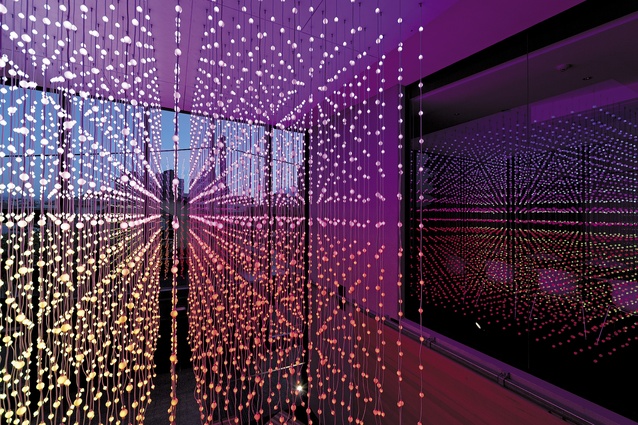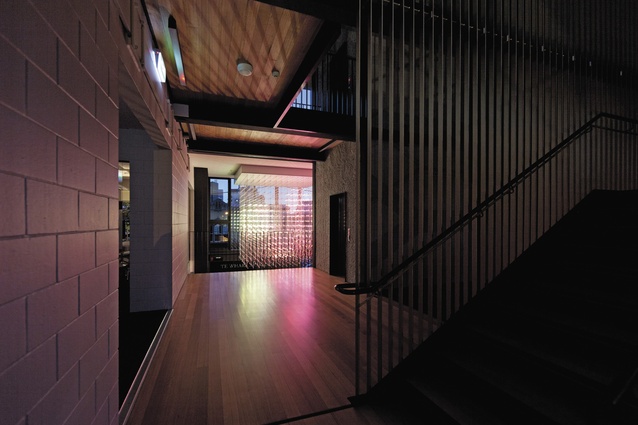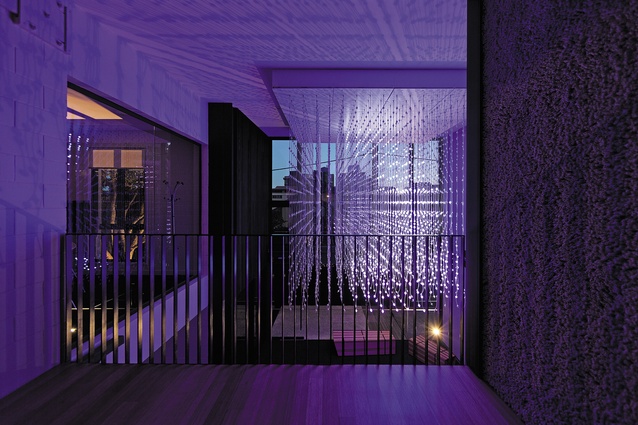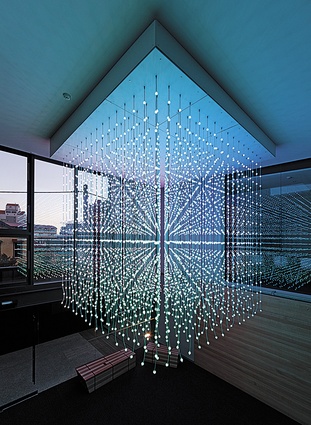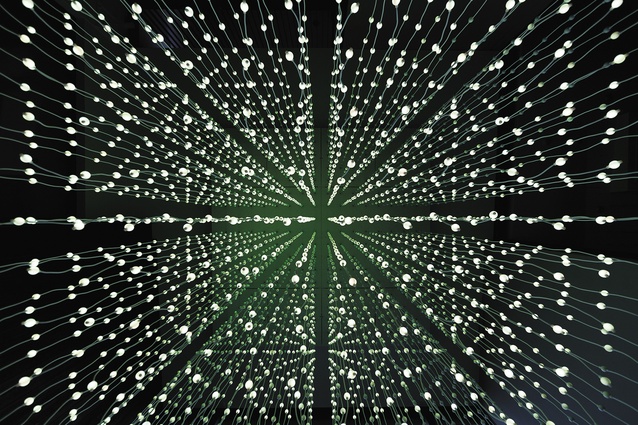Kaleidoscope of possibility
A three-metre chameleon cube of 4,096 LED lights hangs in the foyer of the Royal Society of New Zealand’s (RSNZ) new building in Wellington. Volume 4,096, as it’s called, is the third light grid work in the Ocean of Light series devised by Squidsoup, a digital arts group specialising in interactive light works and volumetric visualisations.
Volume 4,096 changes colour slow or fast, through light pastels to vivid, dark tones. It also creates light sculptures and can present video images. Its visual designer, Chris Bennewith, also associate pro vice-chancellor of enterprise at Massey University Wellington, is the only member of the group living in New Zealand.
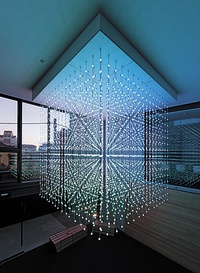
The brief required a light display that was slow moving throughout the day and livelier at night. It is entrancing, almost compulsive viewing, like a lava lamp on a far grander scale, and much more interesting. During the day, the installation’s tones are softer as it displays slow balls that rise from the bottom, like the aforementioned lava lamp, creating a less-frenetic experience in what is a work environment. At night, however, the fireworks really get going.
“It’s quite intriguing to input into a forum of scientists,” Bennewith says. “Someone was into crystals and was talking about the crystalline structure and how all of the angles reminded her of looking at crystals through microscopes.”
Someone else, he says, thought about the radiating patterns by which earthquakes are visualised.
Squidsoup also talked to the RSNZ about the grid becoming a platform for other artists to show their work.
“Imagine a big 3D TV screen with just a few large pixels and think about how you’d use that to show off your work. It’s a sort of new impressionism in a technological sense. The further back you move, the more the brain is able to do that visual mixing [required for] low resolution. As soon as the image starts moving, the brain has got more cues to work out what it is.”
An example is a project that captured a horse running.
“It just picked out the main points of light that move in space – it’s a very abstract thing but you know it’s a horse.”
The deliberate choice of low-resolution image presentation is contrary to a tendency in digital and visual arts for the artist to try and achieve the highest resolution possible, thus making the image as sharp as possible. Bennewith says the brain has to work harder to engage with the more abstract nature of these light works.
As the software programmer and also artistically minded engineer are based in Europe, Bennewith had to work harder in a practical sense. He spent two weeks going up and down the six-metre volume in a cherry picker to install 100 kilograms of wiring in the atrium ceiling.
To observe the display from the ground floor of the RSNZ, you can sit and watch from wooden benches designed by Wendy Neale and Stuart Foster from Massey’s School of Design. The duo collaborated with Scion, a Crown research institute, using some of their experiments with de-watered wood, which Bennewith says hardens like teak. If you’re looking for a softer, more tactile experience to offset all the technology, you’ll find one by the lifts: a core shagpile feature wall by Nick Radford Rugs which just invites you to sink your hands into it.

